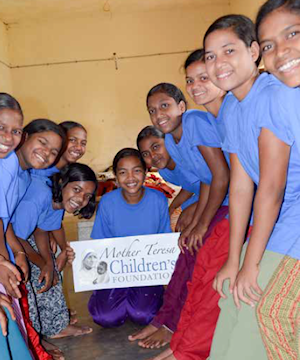
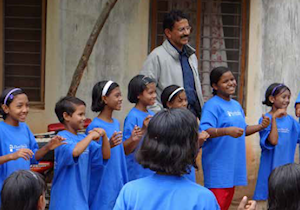
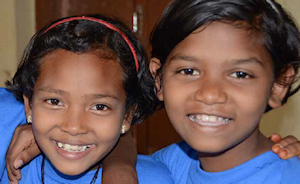
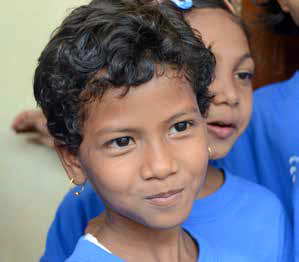
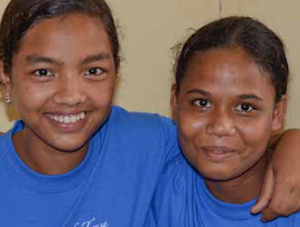
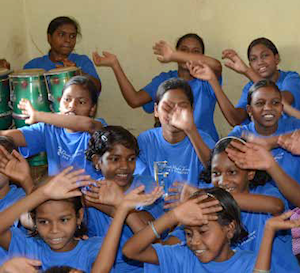
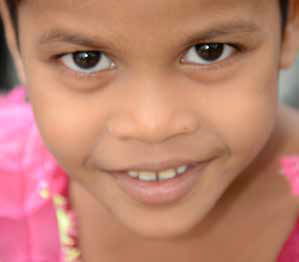
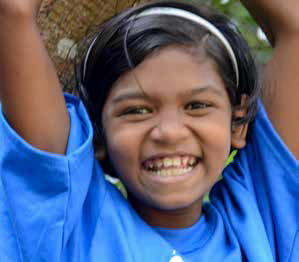
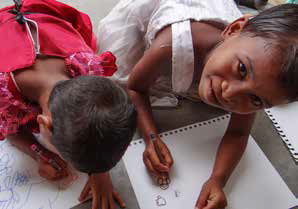
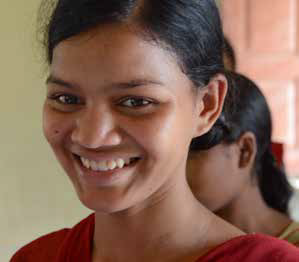
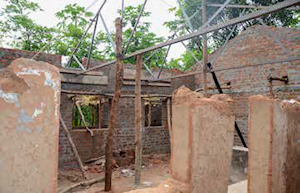
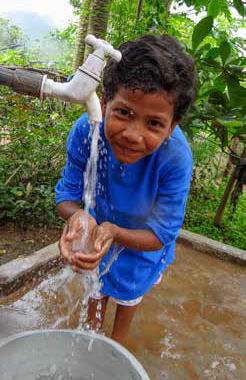
Soura Tribe Girls' Hostel
Program Commitment
Monthly Support for a hostel caring for seventy-one girls, ages five to seventeen, who belong to the Soura Tribe.
Significance of Supporting Tribal Females
India has multiple groups suffering from abundant socio-economic disadvantages. Because of their social caste or ethnicity, people in these groups lack daily access to food, shelter, education, clean water, infrastructure, sanitation, economic opportunity and basic needs like health care.
Tribal groups in India are marginalized because of their ethnicity. The Indian government recognizes about 645 specific indigenous tribes, which comprise around 84.3 million people. According to the Indian government's own statistics, most tribal people live in poverty and have no access to communication or transport. Most experts agree that tribal members are the poorest strata of the society and face even greater hardships than groups relegated to the lowest castes.
In general, Indian tribes occupy well-defined geographic areas. An estimated 300,000 people of the Soura tribe live in the state of Orissa, many in the district of Gajapati in the southern region of the state. Mother Teresa Children's Foundation supports a home for girls from the Soura tribe in the Gajpati district in the village of Gumma. This MTCF-supported compound allows school age females to leave their mountainous huts and live within walking distance to daily education.
In addition to educational access and support, the compound provides the girls with a safe shelter, consistent nutritious food, electricity and perhaps most significantly, clean water, because of a bore well recently provided by MTCF.
How This Program Helps
The girls supported by this Mother Teresa Children's Foundation program face double discrimination. They are members of an ethnic group, the Soura tribe and also they are females.
In India, women have low status compared to men in society. They have limited control over resources and no power regarding important decisions affecting to their lives. During infancy and adolescence, girls in India confront forms of violence including infanticide, neglect of nutritional needs, education and healthcare.
Young, impoverished girls are also often forced into sexual exploitation as a means of economic survival. In many villages, it is still common for parents to arrange a marriage for their twelve year old daughter to a man four to five times her age simply to alleviate the economic pressures associated with raising a child.
The life altering impacts of educating women in the Soura Tribe are monumental. Education is a primary weapon to breaking the cycle of poverty that has permeated the lives of these children. The nutrition, education, access to clean, running water, hygienic conditions, love and protection they receive while living in this MTCF supported program is creating a new world of opportunity. As educated, literate women, each of them will have the ability to pursue economic independence and a destiny of their choosing.
The girls at the MTCF hostel share deep bonds. Their common backgrounds and tribal experiences create tight friendships and loyalty among the group. Their camaraderie and support of each other is apparent and impressive.
Despite a range in ages from five to eighteen years old, the younger girls admire their elders and the older girls protect, nurture and entertain the smaller children.
About the Tribe
People of the Soura tribe isolate themselves in huts located at high elevations on mountaintops that are often inaccessible. The huts are hidden in the folds of mountains and reached only on foot by negotiating steep and zigzagging paths. The Soura are known for being expert climbers. Generally, the terrain where they settle is hilly and dense.
In most cases, it is logistically impossible for the Soura children to walk the distances or negotiate the terrain required to reach a school located in the nearest village at lower elevations. The childhood homes, high in the mountains, where the MTCF Soura girls lived before coming to the compound in Gumma are difficult to imagine for anyone who has enjoyed the typical privilege and services typical of a first world country. Their families build huts using bamboo and mud, which are very basic in design. The huts are usually rectangular with one, small main door. Any livestock the family owns can often be found living within the same cramped space. Most Soura survive with little food, no electricity, no running water, no developed sanitation and no communication or access to transportation.
The local people sit along the roads with hammers and chisels and chip away at large rocks to create gravel for a new road surface. They earn about 100-200 rupees (The equivalent of 50 cents to one USD) per day. Both men and women squat and work continuously, without protection from pouring rain or beating sun. The job is tedious and physically demanding. They move the large boulders by hand, build fire pits to heat the rocks, making them easier to break, then chisel broken chunks into smaller pieces. In addition to physical labor, many of the Soura also work tending and herding livestock and animals or laboring in fields. At the lower elevations, rice paddies are plentiful. All are low wage earners and poverty is rampant. Historically, they are animists. They have their own dialect and isolate themselves from other tribes.
Mother Teresa Children's Foundation support has nearly doubled the number of girls living in the hostel. Prior to MTCF sponsorship, only about 40 girls lived in the hostel. With the funding commitment from MTCF, an additional 31 girls have been added and now 71 live at the hostel full time and attend school in the nearby Gumma village schools.
Bore Well Project
Another significant achievement that has improved quality of life dramatically has been the construction of a new bore well on the premise of the hostel. Prior to the installation of the MTCF bore well, children living in the hostel were often deprived of water for basic needs like drinking, bathing and washing clothes. With the new, clean water source, basic hygiene and health have improved among the children. The water is clean, pressurized and can be collected from storage tanks or at spigots located on the property. It is much deeper than the old well, so water is available even during dry seasons.